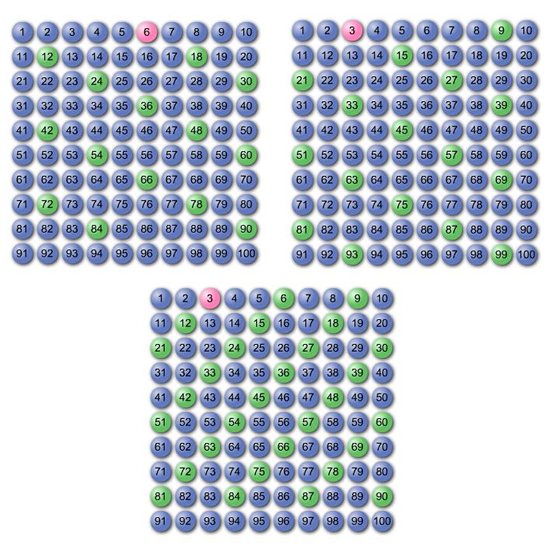Copyright © University of Cambridge. All rights reserved.
'Where Can We Visit?' printed from https://nrich.maths.org/
Show menu
Why do this problem?
This problem offers all students opportunities to explore fundamental ideas about number theory in a simple context. They are encouraged to explore, conjecture, generalise and justify. There are opportunities for older students who are familiar with algebraic manipulation or modulo arithmetic to produce rigorous proofs.
Possible approach
You need a set of number cards 1-100, with the multiples of 5 removed. Shuffle the cards in front of the class and hand out one to each student. Do not tell them that the multiples of 5 are missing!
21, double, 42, take five, 37, take five, 32, take five, 27, double, 54
Finally challenge the class to get to your number (which should be a carefully chosen multiple of five). You may wish to offer a prize......
Once the class give up, ask them to explain why it is impossible.
Demonstrate how the numbers are crossed out as they are visited.
Can they explain their findings and use these to begin to make predictions about other pairs of operations? Encourage them to justify their predictions.
You might find it useful to see if they can identify the pair of operations that produced the patterns in the three grids below. They can choose from either:
$\times 3$ and $-6$,

Key questions
What happens to multiples of 5 when they are doubled?
What happens to multiples of 5 when 5 is subtracted from them?
What about numbers that are 1 more, 2 more, 3 more and 4 more than a multiple of 5?
Possible support
Most students will have little difficulty with doubling or subtracting 5, but may find it more difficult to spot the patterns involved. Using coloured arrows to represent repeated subtractions of 5 on various 1-100 grids (each starting from a different number) may help them to see the patterns emerge.
Possible extension
Students may be interested in this introductory reading on Modular Arithmetic.
Students could have a go at Take Three from Five which has a similar underlying structure. Can they use their insights from the previous problem to solve this challenge?